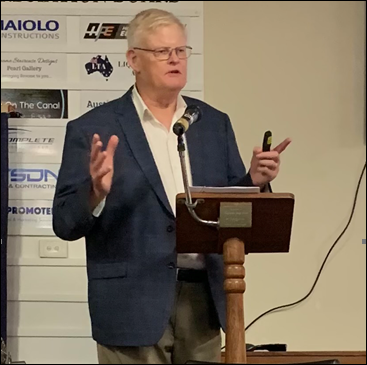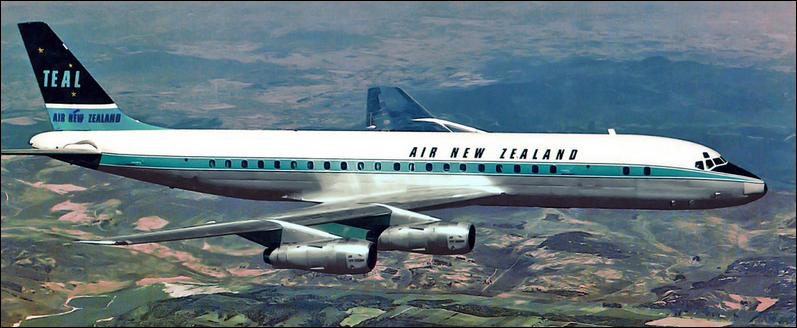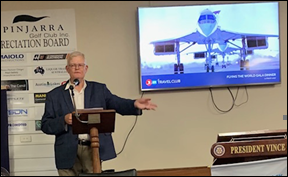Airlineratings.com was developed by a team of aviation editors, who have forensically researched nearly every airline in the world. The company's rating system scores airlines on a rating from one to seven stars based on the airline's safety records – with seven being the highest ranking. Within each airline's report, you will find the country of origin, airline code, booking URL and seat map information. The rating system takes into account a number of different factors related to audits from aviation’s governing bodies, lead associations as well as the airlines' own safety data. Every airline has a safety rating breakdown so you can see exactly how they rate. In fact, airlines are now receiving up to 7 Star Covid ratings based on the way they are addressing that issue.
Geoffrey was educated at Christ Church Grammar School and Hollywood Senior High School, graduating in 1968. He and wife Christine have 5 sons.
Geoffrey has been covering aviation matters for 45 years. He has been often asked "How did you get into it?"
He shared a photograph of himself in Perth holding a tin plane as a young child. (Incidently, Geoffrey noted that the same toy aeroplane, with its original packaging, could fetch more than $5000 today.. ahh, the things we discard).
Geoffrey's Father was in involved in the Import/export business. Another photograph was shared showing Geoffrey and his siblings as children, playing in a homemade plane made from old packing cases that came from his Father's business.
In 1968, his father took the family to New Zealand for a holiday. The flights to and from New Zealand were as much part of the holiday as the visit there. On his return home, Geoffrey wrote to Air New Zealand and asked for a photograph of the plane he flew on. Air New Zealand (or TEAL- Tasman Empire Airways Limited as it was then known; it re-branded as Air New Zealand in 1978) obliged with a splendid photograph of a Douglas DC8 in TEAL colours.
Geoffrey fell in love with the aeroplane and moreso, finding out about the person who developed it, fanned his passion about aviation.
The Douglas Airline Company was founded in 1921 by Donald Wills Douglas. By the beginning of World War 2, the United States was producing some 3000 aircraft annually. Mr Douglas oversaw the US aircraft building program during the conflict, and by the end of the war in 1945, the annual national output had increased to some 300,000. Interestingly, around 80% of the workforce were women.
From this period (the 1930s and 40s), all of the smartest engineers wanted to work for Douglas, such was his reputation. He could well embody the Rotary Four-Way Test, and Douglas' word was his bond.
The genius of people who worked for Douglas - he empowered his development and construction teams before the word "empowering" became commonly used in business circles. For example, the two men who built the Mustang Fighter Plane during WW2, oversaw a process that took 100 days from the beginning of the design to the first production of an aircraft! And Geoffrey wanted to be part of this industry in whatever capacity that he could.
Geoffrey showed us some data showing the dramatic reduction in air travel due to Covid-19. The problems caused by this reduction included more than the obvious effect on passenger numbers - 40% of the world's trade by value goes by air; often much of the fresh produce and other goods goes via commercial flights rather than bulk freight flights. Currently, many passenger aircraft are flying without passengers, but are full of freight.
The air travel industry is losing a lot of money as air travel is down to approx 40% (with 80% loads on flights regarded as a break-even point) since the covid crisis started. The many unused aircraft around the world are currently being stored and maintained in desert areas (such as Alice Springs in Australia) to avoid corrosion and the various nooks and crannies (such as engine air intake points) on the outside of an aircraft are covered to excude birds or flying insects establishing nests.
Geoffrey showed some comparative shots from 'Flight Radar' of the USA, Europe, and Australia to illustrate the massive decrease in air traffic between March and April last year. However, Perth airport is an outlier, as it is currently operating at capacity due to the transport needs of the mining industry. Hence the need for the construction of a second runway at the airport, with constructiion work having been confirmed to begin in the near future.
Australia's domestic flights are expected to recover more quickly than international; Geoffrey expects that regular international passenger flights will not return to normal until 2025. Recovery, or the timing for a return to pre-covid flight traffic, around the world varies depending on where you live and the government policy in that nation.
The whole travel experience has dramatically changed - in future a passenger will need a travel pass that includes proof of having had a Covid Vaccination. Already there are places one can't go without proof of vaccination against certain diseases, such as for Yellow Fever. The Covid-based Check-in process will include screening at airports; individual temperature checks, masks on flights, washing hands and so on. Geoffrey noted that air-conditioning on aircraft is incredibly good because of great modern filter systems. Some 25% of air within the aircraft is filtered and recycled, and an additional (new fresh air) 75% is drawn in from outside through compressors. It has been found that perfume and alcohol fumes do have an effect on jet-lag, so it is good to know that these are removed by the filters. Passengers on board the aircraft will be required to wear a mask, and will be provided with sanitiser kits; even a plastic face screen may be provided on some airlines.
In between flights, special sanitizer machines (using ultra-violet radiation) are now used to completely sterilise planes to ensure the safety of all; flight crew and passengers alike. Geoffrey showed us some photos of what flying as a passenger looks like at present- testing prior to boarding the aicraft, people dressed in protective clothing greeting the passenger as they embark, and special kits and instructions issued to passengers- the future will bear little resemblance to the past experience of commercial flying.
Geoffrey then told us some humorous stories regarding travelling around the world, being suspected of drug trafficking in the US, his father's disappointing experience as an early member of Cathay-Pacific's Marco Polo Club , and having missed a first class trip on the Concorde because of having to be home for his son's fifth birthday.
Geoffrey (and a colleague) have a unique claim to fame as Australia's first male domestic flight attendants (of the modern era). The colleagues were based in Port Hedland, with Geoffrey's role being a Purser Loader (ie general dogsbody), and were on a flight that was diverted to Newman because of fog at Port Hedland. Geoffrey and his colleague then ended up being the flight attendants for a bunch of flyin-flyout miners on a trip from Newman to Perth. (Apparently not such a dry trip....)
On another occasion, Geoffrey flew on a Carrier Onboard Delivery (COD) Flight to an Aircraft Carrier at sea. The Load Master did the drill regarding landing and where they'd exit dependant on whether they landed right way up or upside down, when suddenly the signal was given to land and the plane dropped out of the sky. It hit the deck and he experienced about 4Gs of force as the wire caught the plane- and Geoffrey finally succumbed to the effects of air sickness. Geoffrey was sick for about 24hrs after the flight - he was eventually prescribed phenergan with ephedrine (*note; all medicines have side-effects.. alcohol and phenergan do NOT mix- ed) which sorted him out within 30-40minutes.
The next time he undertook such a trip - he took phenergan before the flight - it was a difficult landing - the plane's hook missed the wire and it took three goes to land - but this time, Geoffrey was fine.
A couple more stories involving travel experiences including a visit to Burj Al Arab in Dubai left the family wishing they'd all ordered chicken and chips. Their child did not like the "fancy stuff on the menu", so was fed Chicken & chips (at $10 a serve), while the "fancy stuff" cost a small fortune!
Geoffrey answered a number of questions from the audience, and was eventually asked for his opinion regarding the mystery surrounding the disappearance of Malaysia Airlines Flight MH370.Geoffrey discussed and provided a lot of information regarding the search area, the debris that was found, and debunking several conspiracy theories. The scientific and forensic investigations applied to the 33 pieces of debris that were shown to have originated from the missing aircraft, indicated that the aircraft perished by spiralling to the ocean, at a location some 2000 Km west of Perth. Further evidence strongly suggests that there is every chance that this disapearence was human caused ... Perhaps acknowledging that may be the reason behind why the Malaysian Government has not accepted the offer of another mission to find the plane (on a "No find, no fee deal").
Past-President Geoff Booth thanked Geoffrey for his entertaining and very informative talk, and presented him with a memento of the occasion.



